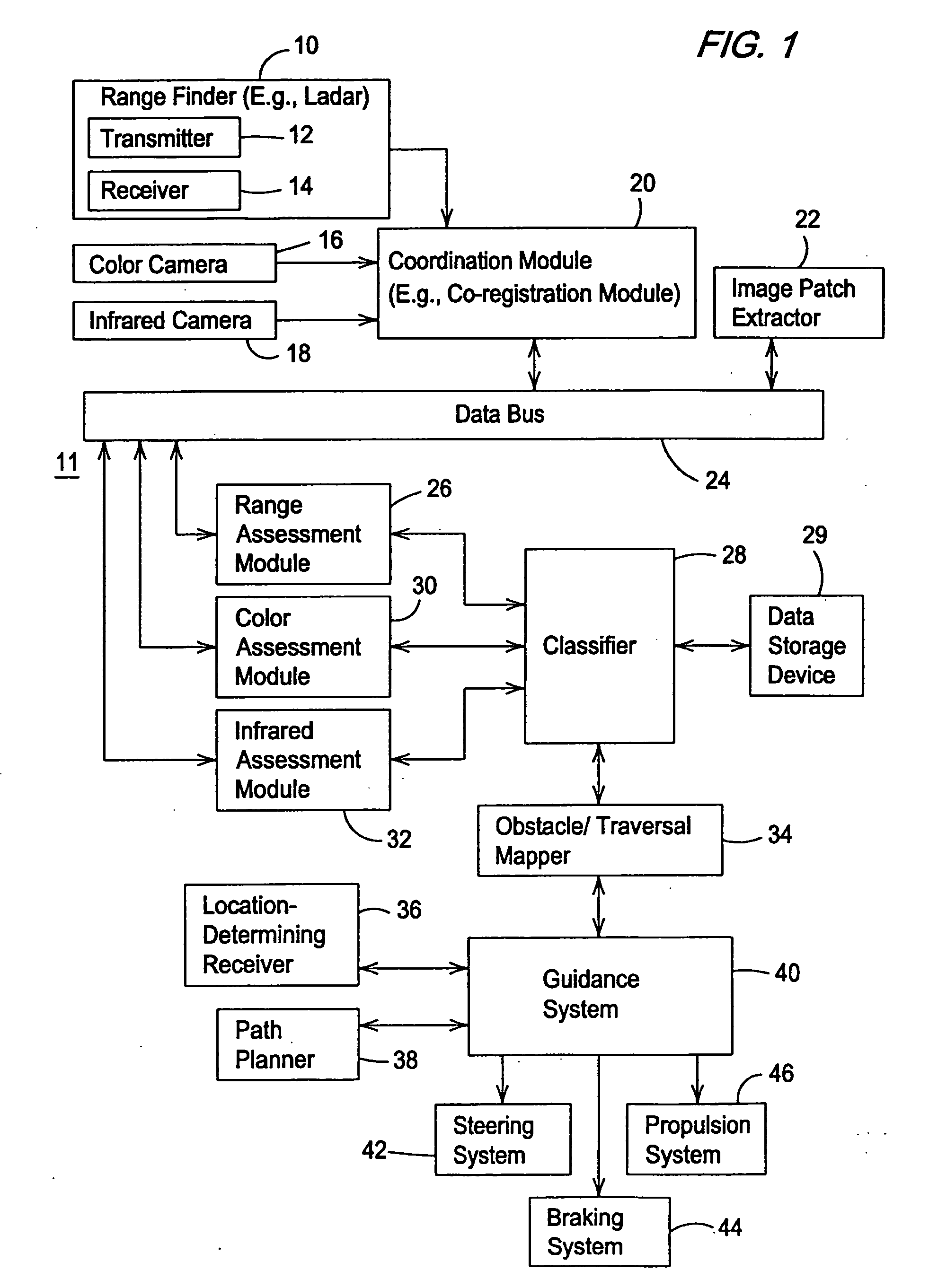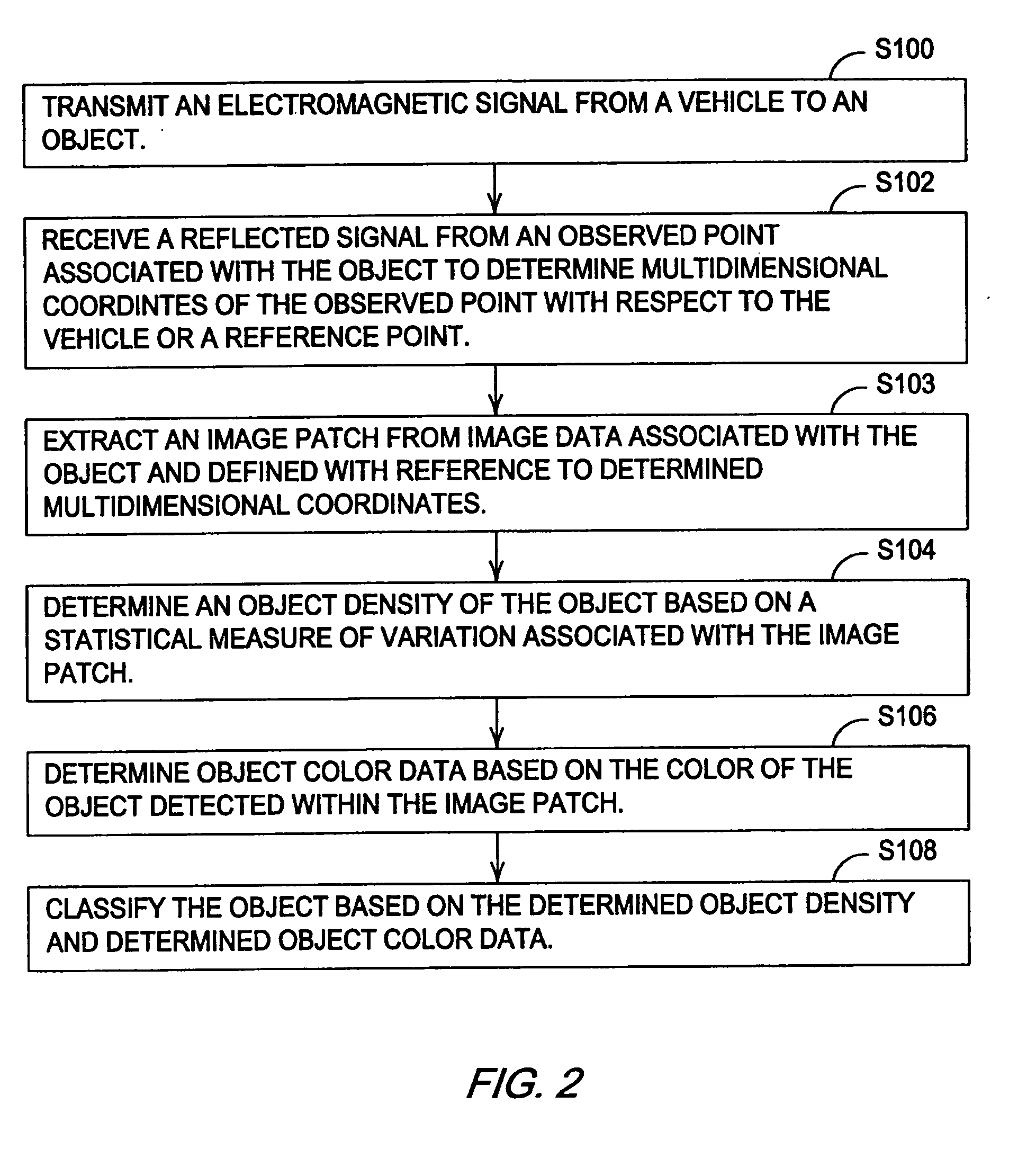Obstacle detection having enhanced classification
a technology of obstacle detection and classification, applied in the field of obstacles, can solve the problems of prior art obstacle detectors not being able to distinguish one type of obstacle from another, prior art obstacle detectors may have difficulty in treating high vegetation or weeds in the path of the vehicle differently, and animal injuries
- Summary
- Abstract
- Description
- Claims
- Application Information
AI Technical Summary
Benefits of technology
Problems solved by technology
Method used
Image
Examples
Embodiment Construction
[0014]In FIG. 1, the obstacle detection system 11 comprises a range finder 10, a color camera 16, and an infrared camera 18 coupled to a coordination module 20. The coordination module 20, image patch extractor 22, range assessment module 26, color assessment module 30, and infrared assessment module 32 may communicate with one another via a databus 24. The range assessment module 26, the color assessment module 30, and the infrared assessment module 32 communicate with a classifier 28. In turn, the classifier 28 provides classification output data to an obstacle / traversal mapper 34.
[0015]The mapper 34, location-determining receiver 36 and a path planner 38 provide input data to a guidance system 40. The guidance system 40 provides output or control data for at least one of a steering system 42, a braking system 44, and a propulsion system 46 of a vehicle during operation of the vehicle.
[0016]In one embodiment, the range finder 10 comprises a laser range finder, which includes a tra...
PUM
 Login to View More
Login to View More Abstract
Description
Claims
Application Information
 Login to View More
Login to View More - R&D
- Intellectual Property
- Life Sciences
- Materials
- Tech Scout
- Unparalleled Data Quality
- Higher Quality Content
- 60% Fewer Hallucinations
Browse by: Latest US Patents, China's latest patents, Technical Efficacy Thesaurus, Application Domain, Technology Topic, Popular Technical Reports.
© 2025 PatSnap. All rights reserved.Legal|Privacy policy|Modern Slavery Act Transparency Statement|Sitemap|About US| Contact US: help@patsnap.com



